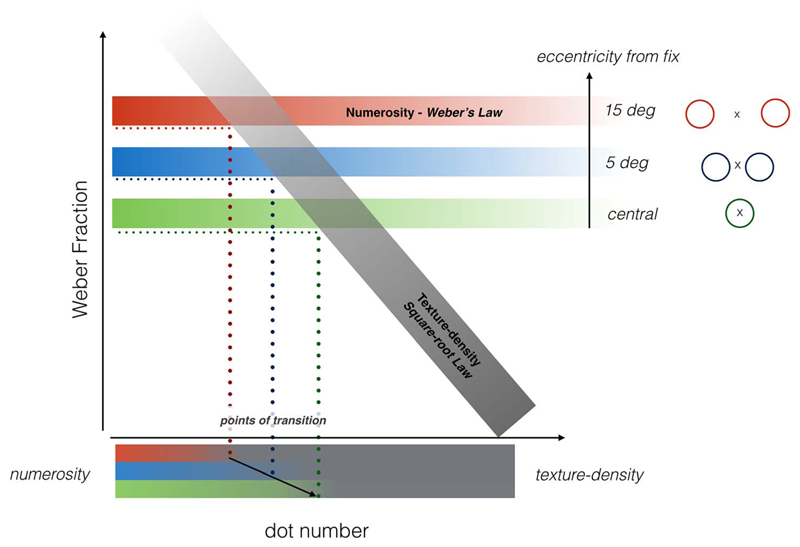Figure 9.
Concept of the two separate perceptual mechanisms subserving numerosity discrimination. Sparse stimuli (low numerosities) are sensed by a mechanism obeying Weber's Law (threshold proportional to numerosity), which is dependent on eccentricity (red, blue, and green bars). Texture-discrimination mechanisms (gray bar) come into play with more packed stimuli (higher numerosity): Its threshold decreases with the square root of numerosity. This mechanism does not depend on eccentricity. When comparing the relative numerosity of two patches of items, subjects were free to use any criterion: As the presentation area was kept constant, both texture-density and number were equally valid. According to this model, the measured performance should yield a two-limbed function because subjects rely on the more sensitive mechanism for that specific numerosity level. As the Numerosity mechanism is less precise as eccentricity increase, the transition point between those two mechanisms depends on eccentricity.

